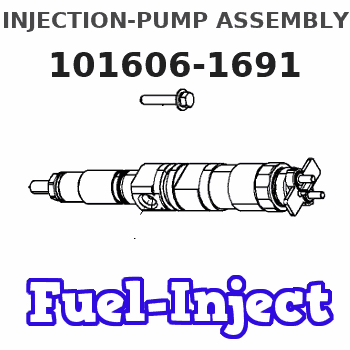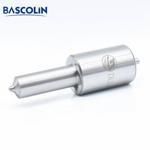Information injection-pump assembly
BOSCH
F 019 Z20 473
f019z20473
ZEXEL
101606-1691
1016061691
MITSUBISHI
ME076240
me076240

Rating:
Service parts 101606-1691 INJECTION-PUMP ASSEMBLY:
1.
_
6.
COUPLING PLATE
7.
COUPLING PLATE
8.
_
9.
_
11.
Nozzle and Holder
ME076087
12.
Open Pre:MPa(Kqf/cm2)
17.7(180)/21.6(220)
15.
NOZZLE SET
Include in #1:
101606-1691
as INJECTION-PUMP ASSEMBLY
Include in #2:
104746-6255
as _
Cross reference number
Zexel num
Bosch num
Firm num
Name
101606-1691
F 019 Z20 473
ME076240 MITSUBISHI
INJECTION-PUMP ASSEMBLY
6D16 * K 14BE PE6A PE
6D16 * K 14BE PE6A PE
Information:
Caterpillar's Scheduled Oil Sampling (S*O*S) analysis is the best indicator for determining what is happening inside your engine.S*O*S analysis is a diagnostic tool used to determine oil performance and component wear rates. S*O*S analysis uses a series of tests designed to identify and measure contamination such as:* soot, sulfur, etc.* degradation such as the presence of fuel, water and antifreeze in a sample of oil.* the amount of wear metals present in the oil sample.Wear metal present in the oil sample are compared to established Caterpillar norms to determine acceptability. S*O*S analysis must be performed on a continuing basis to be effective as an indicator. Intermittent sampling does not allow wear rate trend lines to be established.Obtain S*O*S samples at regularly scheduled intervals to monitor the condition and maintenance requirement of your engine. Each oil sample should be taken when the oil is warm and well mixed to ensure that the sample is representative of the oil in the engine crankcase.Consult your Caterpillar dealer for complete information and assistance in establishing an S*O*S analysis program for your engine(s).S*O*S Analysis
S*O*S analysis is composed of three basic tests:* Wear analysis* Chemical and Physical Tests* Oil Condition Analysis Wear analysis is performed with an atomic absorption spectrophotometer to monitor component wear by identifying and measuring concentrations, in parts per million, of wear elements present in the oil. Based on known normal concentrations data, maximum limits of wear elements are established. Impending failures can be identified when test results deviate form concentration levels established as acceptable, based on normal wear. Chemical and Physical Tests detect the presence of water, fuel and glycol (antifreeze) in the oil and determine whether or not their concentrations exceed established maximum limits. Oil Condition is evaluated with infrared analysis. This determines the presence and measures the amount of contaminants such as soot, sulfur products, oxidation, and nitration products in the oil. Infrared analysis can also assist in customizing (reducing, maintaining or extending) oil change intervals for particular conditions and applications.Infrared analysis should always be accompanied by wear element analysis and chemical and physical test to assure accurate diagnosis. Infrared analysis must be used to determine oil change intervals. S*O*S analysis must include Infrared (IR) in the analysis.The test results of the oil samples will then be used as a basis for determining the oil change interval for your engine, giving you the ultimate time between oil changes without the risk of engine damage.Refer to Caterpillar pamphlet Listen To Your Oil (PEDP1129) for information and benefits of S*O*S analysis.
S*O*S analysis is composed of three basic tests:* Wear analysis* Chemical and Physical Tests* Oil Condition Analysis Wear analysis is performed with an atomic absorption spectrophotometer to monitor component wear by identifying and measuring concentrations, in parts per million, of wear elements present in the oil. Based on known normal concentrations data, maximum limits of wear elements are established. Impending failures can be identified when test results deviate form concentration levels established as acceptable, based on normal wear. Chemical and Physical Tests detect the presence of water, fuel and glycol (antifreeze) in the oil and determine whether or not their concentrations exceed established maximum limits. Oil Condition is evaluated with infrared analysis. This determines the presence and measures the amount of contaminants such as soot, sulfur products, oxidation, and nitration products in the oil. Infrared analysis can also assist in customizing (reducing, maintaining or extending) oil change intervals for particular conditions and applications.Infrared analysis should always be accompanied by wear element analysis and chemical and physical test to assure accurate diagnosis. Infrared analysis must be used to determine oil change intervals. S*O*S analysis must include Infrared (IR) in the analysis.The test results of the oil samples will then be used as a basis for determining the oil change interval for your engine, giving you the ultimate time between oil changes without the risk of engine damage.Refer to Caterpillar pamphlet Listen To Your Oil (PEDP1129) for information and benefits of S*O*S analysis.
Have questions with 101606-1691?
Group cross 101606-1691 ZEXEL
Mitsubishi
101606-1691
F 019 Z20 473
ME076240
INJECTION-PUMP ASSEMBLY
6D16
6D16
